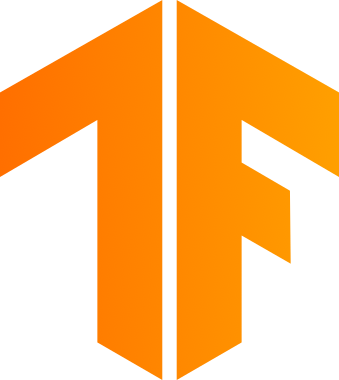TensorFlow Review: Powering the Future of AI and Machine Learning

In today’s data-driven world, artificial intelligence (AI) and machine learning (ML) are more than buzzwords — they are transforming how businesses operate. At the heart of this transformation is TensorFlow, one of the most powerful and widely adopted open-source AI frameworks.
Developed by Google Brain and released in 2015, TensorFlow has quickly become a cornerstone in AI development. From image recognition to autonomous vehicles, this flexible framework powers some of the world’s most advanced technologies.
In this review, you’ll discover what TensorFlow is, how it empowers businesses, and why it’s shaping the future of AI innovation.
What Is TensorFlow?
TensorFlow is a comprehensive open-source platform for machine learning and deep learning. At its core, it uses data flow graphs where nodes represent operations and edges represent data—called tensors—that flow between them.
Key Features:
- 🔁 Scalability across CPUs, GPUs, and TPUs
- 🌐 Cross-platform support (desktop, mobile, web, edge)
- 🧠 Pre-trained models and libraries (e.g., TensorFlow Hub, TensorFlow Lite)
- 🧑💻 Multi-language support (Python, C++, JavaScript, etc.)
- 📦 Integration with popular tools and cloud services
Whether you’re building from scratch or fine-tuning a state-of-the-art model, TensorFlow gives you the tools to innovate at scale.
How TensorFlow Helps Businesses Thrive
From startups to Fortune 500s, businesses use TensorFlow to unlock new efficiencies, personalize customer experiences, and gain a competitive edge. Here are key business applications:
1. Custom AI Solutions
TensorFlow allows companies to develop tailored AI models specific to their workflows and customer needs.
✅ Example: An e-commerce platform can create a recommendation engine based on browsing and purchase behavior, boosting engagement and sales.
2. Computer Vision Capabilities
With ready-to-use models and training tools, TensorFlow simplifies the development of computer vision systems.
✅ Example: A healthcare provider uses TensorFlow to detect tumors in MRI scans, speeding up diagnosis and improving outcomes.
3. Natural Language Processing (NLP)
TensorFlow enables advanced language understanding, making it ideal for chatbots, virtual assistants, and sentiment analysis.
✅ Example: A SaaS company implements a multilingual AI chatbot for customer support, reducing response time and improving satisfaction.
4. Predictive Analytics
With TensorFlow, businesses can analyze historical data and build forecasting models to improve decision-making.
✅ Example: A fintech startup uses TensorFlow to predict loan defaults, enabling more accurate risk assessment.
5. Edge AI & IoT Integration
TensorFlow Lite allows businesses to run ML models directly on edge devices, such as mobile phones and IoT sensors.
✅ Example: A factory installs TensorFlow Lite-powered sensors to predict machine failures in real-time, reducing downtime and maintenance costs.
The Future of AI Development with TensorFlow
TensorFlow is not just a development tool—it’s helping to redefine the future of how AI is built, deployed, and scaled.
1. Democratizing AI
As an open-source platform with a global community, TensorFlow makes powerful AI tools accessible to developers and businesses worldwide.
➡️ Even solo developers or startups can now build enterprise-grade models thanks to pre-trained assets and rich documentation.
2. Scalable Across Any Infrastructure
From mobile phones to cloud supercomputers, TensorFlow scales effortlessly. This allows businesses to deploy AI wherever it’s needed.
➡️ For example, a logistics company can roll out predictive delivery models across multiple regions using TensorFlow’s cloud and edge capabilities.
3. Enabling Cutting-Edge Research
TensorFlow supports rapid experimentation. The Model Garden and TensorFlow Hub provide researchers with battle-tested models to build upon.
➡️ This accelerates innovation while maintaining model accuracy and reproducibility.
4. Ethical & Responsible AI
TensorFlow is at the forefront of AI ethics. Tools like Fairness Indicators and Model Explainability help ensure that AI solutions are transparent, fair, and non-discriminatory.
➡️ A financial institution, for instance, can evaluate whether its loan approval model exhibits bias and take corrective action as needed.
Limitations of TensorFlow
Despite its advantages, TensorFlow has some drawbacks worth noting:
- 📘 Steep Learning Curve: Beginners may find it overwhelming. While documentation is abundant, mastering TensorFlow takes time.
- ⚙️ Performance Trade-offs: In some tasks, alternative frameworks like PyTorch may offer faster performance or simpler APIs.
- 🔍 Community Variability: As an open-source ecosystem, TensorFlow’s third-party tools vary in quality. Users should validate any external models or code before integration.
Ultimately, choosing TensorFlow should be based on your team’s experience, project goals, and required scalability.
Who Should Use TensorFlow?
TensorFlow is ideal for:
- 🧑💻 Data scientists and AI researchers
- 🏢 Enterprises building AI into products
- 🛠️ Developers creating mobile and web-based ML apps
- 🧠 Startups building intelligent automation tools
- 🔍 Researchers exploring computer vision or NLP models
Whether you’re training a neural network or deploying a lightweight edge model, TensorFlow offers both power and flexibility.
Final Thoughts: Is TensorFlow Worth It?
Absolutely — if you need scale, flexibility, and a strong AI foundation. TensorFlow empowers businesses to innovate across industries, whether in healthtech, fintech, retail, or manufacturing.
Its open-source model, backed by Google and a vibrant global community, ensures it will keep evolving with the needs of tomorrow.
However, businesses must also adopt it responsibly—balancing technical capabilities with ethical awareness. Transparency, fairness, and explain ability are just as important as performance.
